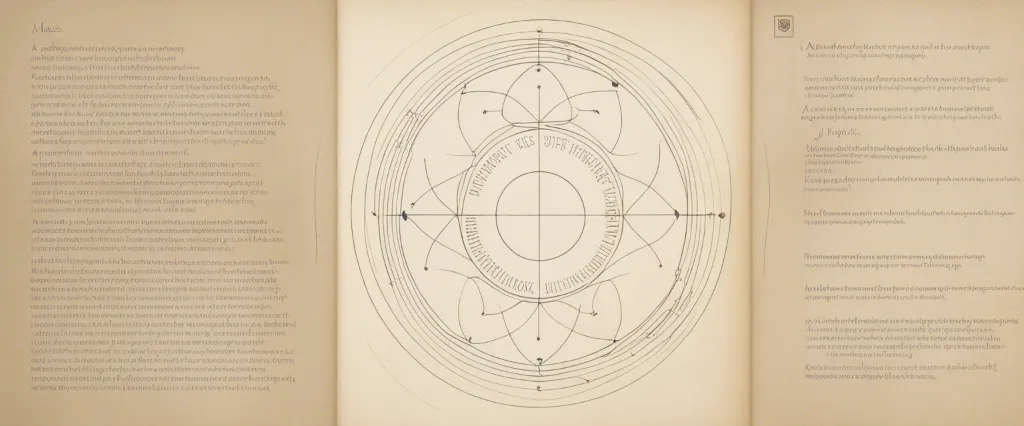In Twelve Steps to a Compassionate Life by Karen Armstrong,Karen Armstrong presents an insightful guide to cultivating compassion in our lives, both for ourselves and others. Drawing upon her extensive knowledge of religious traditions and her expertise as a renowned scholar of comparative religion, Armstrong demonstrates how compassion lies at the core of every major faith and offers a practical framework to develop this essential virtue. In this transformative journey, readers are guided through twelve interrelated steps, each addressing a key aspect of compassion. Armstrong’s expertise and passion for understanding religious doctrines and practices make her an authoritative voice on the subject, renowned for her ability to bridge the gap between diverse faiths and promote empathy and harmony among people of all backgrounds. Embark upon this profound exploration with Armstrong, as she illuminates the path to a more compassionate and inclusive world.
Chapter 1:Exploring the concept of compassion and its importance
Chapter 1 of Twelve Steps to a Compassionate Life by Karen Armstrong delves into the concept of compassion and emphasizes its vital importance in today’s society. Armstrong begins by highlighting the fundamental role of compassion in various religious and philosophical traditions. She explains how compassion has been considered a cornerstone of ethical behavior in all major religions, such as Christianity, Islam, and Buddhism.
The chapter explores the definition of compassion, emphasizing that it is not simply feeling sorry for someone but rather an active commitment to alleviating the suffering of others. Armstrong emphasizes that compassion is a quality that can be cultivated and nurtured through conscious effort and practice.
Armstrong further discusses how compassion can counteract the harmful effects of egoism, self-centeredness, and violence that afflict contemporary society. She argues that the world is in desperate need of compassion as it has witnessed an alarming rise in aggression, indifference, and inequality. To overcome these challenges, it becomes essential for individuals to embrace compassion as a guiding principle.
Proposing an understanding of compassion that surpasses religious boundaries, Armstrong emphasizes the secular nature of her approach. She argues that compassion is a universal value that can be embraced by all, irrespective of their religious beliefs or lack thereof.
In summary, Chapter 1 of Twelve Steps to a Compassionate Life by Karen Armstrong explores the concept of compassion, highlighting its significance in multiple religious and philosophical traditions. Armstrong underscores the need for compassion in countering the negative aspects of contemporary society and proposes that compassion can be nurtured and practiced by individuals from all backgrounds.
Chapter 2:Understanding the role of empathy in fostering compassion
In Chapter 2 of “Twelve Steps to a Compassionate Life” by Karen Armstrong, the focus is on understanding the role of empathy in fostering compassion. Armstrong begins by emphasizing the significance of empathy, which she defines as the ability to feel and understand the emotions of others. She explains that empathy is a fundamental aspect of compassion, as it enables us to connect with and relate to the suffering and experiences of others.
Armstrong explores the roots of empathy, tracing it back to the ancient civilization of the Axial Age. During this period, many influential religious and philosophical traditions, such as Buddhism, Judaism, and Confucianism, emerged with a strong emphasis on compassion for others. These traditions recognized that empathy was vital in cultivating a compassionate society, as it allowed individuals to understand the importance of treating others with kindness and compassion.
The chapter also highlights the importance of developing an empathetic imagination, which involves putting ourselves in the shoes of others and seeing the world through their perspective. Armstrong provides examples of individuals who have demonstrated extraordinary empathy, like the Dalai Lama and Mahatma Gandhi, to illustrate the transformative power of empathetic understanding.
Additionally, Armstrong proposes that empathy should also extend to non-human beings, especially animals. She argues that recognizing and valuing the feelings and experiences of animals is crucial in creating a more compassionate world.
Overall, Chapter 2 of “Twelve Steps to a Compassionate Life” emphasizes the essential role of empathy in fostering compassion. By understanding and practicing empathy, individuals can develop a deeper sense of connection with others, leading to a more compassionate and empathetic society.
Chapter 3:Examining the obstacles to compassion in modern society
Chapter 3: Examining the obstacles to compassion in modern society of the book Twelve Steps to a Compassionate Life by Karen Armstrong delves into the various challenges that hinder the practice of compassion in today’s society. Armstrong identifies three key obstacles: the egocentric nature of modern consumerism, the impact of the media, and the prevalence of fear and anxiety.
Firstly, modern consumerism often prioritizes the pursuit of self-interest and personal gratification over the needs and suffering of others. People are encouraged to believe that their happiness lies solely in material possessions, further distancing them from developing empathy and compassion for those in need. This self-centered ideology, fueled by capitalism, prevents individuals from truly understanding the interconnectedness of humanity and inhibits acts of kindness towards others.
Secondly, the media plays a significant role in shaping societal attitudes and perceptions. Unfortunately, the media often sensationalizes violence, conflicts, and negative narratives. This constant exposure to distressing news can desensitize people, leading to indifference and a lack of compassion. Furthermore, the media’s focus on individualistic success stories over collective societal well-being perpetuates a culture of competition and division, further hindering compassion.
Lastly, Armstrong highlights the widespread prevalence of fear and anxiety in modern society. These emotions often stem from economic uncertainties, the fear of terrorism, and other social challenges. Fear breeds self-preservation and can cause individuals to become defensive and distrustful of others, resulting in a lack of compassion.
In conclusion, Chapter 3 of Twelve Steps to a Compassionate Life emphasizes the barriers to compassion in modern society. Consumerism, media influence, and fear all pose significant challenges to nurturing a compassionate mindset. Recognizing and addressing these obstacles is crucial in cultivating a more compassionate society.
Chapter 4:Practicing self-compassion and cultivating inner peace

Chapter 4 of “Twelve Steps to a Compassionate Life” by Karen Armstrong delves into the concept of self-compassion and cultivating inner peace. Armstrong suggests that self-compassion is essential for developing a compassionate outlook towards others.
The chapter begins by discussing how individuals often underestimate the importance of self-care. In today’s fast-paced and competitive world, people tend to prioritize external achievements rather than focusing on their own well-being. Armstrong highlights the importance of self-compassion and emphasizes that it is not selfish but rather necessary for leading a compassionate life.
Furthermore, she explains that cultivating inner peace is essential for developing self-compassion. Inner peace can be achieved through practices such as meditation, mindfulness, and self-reflection. These practices help individuals become more aware of their thoughts and emotions, allowing them to respond to themselves and others with kindness and understanding.
Armstrong also emphasizes the need to let go of self-judgment and embrace self-acceptance. She suggests that individuals should refrain from harsh self-criticism and instead treat themselves with the same compassion they would extend to a dear friend. By practicing self-compassion, individuals can overcome feelings of unworthiness and foster a healthy sense of self-esteem.
The chapter concludes by highlighting that self-compassion and inner peace are ongoing practices that require time and patience. It is a lifelong journey of self-discovery and growth. Through regular self-care and cultivating inner peace, individuals can develop a strong foundation for compassion, which enables them to extend kindness and understanding not only to themselves but also to others in their daily interactions.
Chapter 5:Cultivating compassion through mindfulness and meditation
Chapter 5 of “Twelve Steps to a Compassionate Life” by Karen Armstrong focuses on the cultivation of compassion through mindfulness and meditation. In this chapter, Armstrong explores how mindfulness and meditation practices can contribute to the development of a more compassionate mindset and way of being.
Armstrong begins by emphasizing the importance of mindfulness, which involves bringing attention to the present moment without judgement. By practicing mindfulness, individuals can become more aware of their thoughts, feelings, and reactions, enabling them to respond to others with greater empathy and understanding.
The author also highlights the benefits of meditation, which involves training the mind to focus and become more aware. Meditation provides an opportunity for individuals to cultivate compassion by directing their attention towards the suffering and needs of others. Through meditation, individuals can develop a sense of interconnectedness and a deeper understanding of shared humanity, which can help foster compassion in their daily lives.
Armstrong introduces various meditation techniques that support the cultivation of compassion. These practices involve visualizations, breathing exercises, and chants centered around kindness and compassion. By regularly engaging in these practices, individuals can develop greater empathy, patience, and love towards themselves and others.
Furthermore, Armstrong emphasizes the need for self-compassion, as cultivating compassion towards ourselves allows us to extend that compassion to others more effectively. She suggests that self-care and self-reflection are essential components of compassionate living, as they enable individuals to replenish their own resources and better respond to the needs of others.
Overall, Chapter 5 underscores the significance of mindfulness and meditation in cultivating compassion. By dedicating time and effort to these practices, individuals can develop a deeper understanding of themselves and others, and foster compassion as a guiding principle in their lives.
Chapter 6:Promoting compassion in relationships and community interactions
Chapter 6 of “Twelve Steps to a Compassionate Life” by Karen Armstrong explores the importance of promoting compassion in relationships and community interactions. Armstrong begins by emphasizing the significance of empathy and understanding in building strong and harmonious relationships. She highlights the need for us to listen attentively to others, putting aside our preconceived notions and truly hearing and acknowledging their experiences and perspectives.
Additionally, Armstrong emphasizes the role of forgiveness in cultivating compassion. She explains that forgiving others is not about condoning their harmful actions but rather about liberating ourselves from the burden of anger and resentment. By forgiving, we can break the cycle of violence and promote healing and reconciliation in our relationships and communities.
Promoting compassion also involves recognizing the interconnectedness of all beings. Armstrong encourages us to extend our compassion beyond our immediate circles and engage with our broader communities. She stresses the importance of active participation in community-building activities, whether through volunteering, supporting local initiatives, or simply being present and engaged in the lives of those around us.
Armstrong also addresses the challenging aspect of overcoming bias and prejudice in our relationships and interactions. She challenges us to confront our own biases, prejudices, and stereotypes and consciously strive to view others with impartiality and fairness. This requires self-reflection and a willingness to interrogate our own assumptions and prejudices.
Ultimately, Armstrong argues that compassion in relationships and community interactions requires a commitment to understanding, forgiveness, interconnectedness, and actively working to overcome bias and prejudice. By practicing these qualities, we can foster empathy, harmony, and transformative relationships within our communities.
Chapter 7:Extending compassion to those in need and marginalized groups
Chapter 7 of “Twelve Steps to a Compassionate Life” by Karen Armstrong explores the importance of extending compassion to those in need and marginalized groups. Armstrong begins by acknowledging that human beings often feel a natural inclination to help those who are suffering, but this compassion can sometimes be limited to those within our immediate circle or those who resemble ourselves. This chapter serves as a reminder to expand our empathetic reach to include individuals who may be different from us or are marginalized by society.
Armstrong emphasizes the need to challenge our prejudices, biases, and assumptions in order to truly embrace compassion. She discusses the harmful impact of stereotypes and encourages readers to actively seek understanding and empathy for those who may experience prejudice and discrimination. By recognizing and acknowledging the challenges faced by marginalized groups, we can work towards building a more compassionate and inclusive society.
The author also highlights the importance of personal responsibility in extending compassion. She suggests that each individual can make small but impactful changes in their own lives to promote inclusivity and help those in need. These actions could include volunteering, donating, or simply offering a listening ear to someone who is struggling. Armstrong reminds readers that even small acts of compassion can have a profound impact on individuals and communities.
In conclusion, Chapter 7 of “Twelve Steps to a Compassionate Life” challenges readers to step outside their comfort zones and extend compassion to those in need and marginalized groups. By dispelling stereotypes, recognizing personal biases, and taking individual responsibility, Armstrong believes that we can create a more compassionate and inclusive world.

Chapter 8:Integrating compassion into everyday actions and ethical choices
Chapter 8 of “Twelve Steps to a Compassionate Life” by Karen Armstrong explores the idea of integrating compassion into our everyday actions and ethical choices. In this chapter, Armstrong emphasizes the importance of moving beyond abstract ideals of compassion and actively putting it into practice in our daily lives.
The chapter begins by discussing the challenge of translating compassion into action. Armstrong argues that compassion should not be limited to sporadic acts of kindness, but must become a consistent driving force in our interactions with others. She suggests that compassion should guide our decisions and behaviors, even in challenging situations.
Armstrong highlights the importance of empathy in cultivating compassion. By putting ourselves in others’ shoes and understanding their suffering, we are better able to respond with kindness and support. She encourages readers to actively listen and genuinely engage with others to foster empathy.
Moreover, the chapter explores the concept of ethical mindfulness. Armstrong suggests that being aware of our actions and their impact on others is crucial if we want to integrate compassion into our lives. By cultivating mindfulness, we can question our assumptions and be more attentive to the needs of others.
Armstrong also emphasizes the significance of small acts of kindness. She suggests that even seemingly insignificant actions, such as greeting strangers with a smile or offering a helping hand, can contribute to a more compassionate world. These small steps, when multiplied, have the power to create lasting positive change in both individuals and communities.
In conclusion, Chapter 8 of “Twelve Steps to a Compassionate Life” encourages readers to go beyond theoretical understanding of compassion and actively incorporate it into their daily lives. It promotes empathy, ethical mindfulness, and small acts of kindness as guiding principles for a more compassionate existence. By making compassion a central value, readers can create a positive impact on the world and contribute to building a more compassionate and understanding society.
After Reading
In “Twelve Steps to a Compassionate Life,” Karen Armstrong explores the essential concept of compassion and provides a practical guide to cultivating compassion in our day-to-day lives. Through examining various religious and philosophical traditions, Armstrong emphasizes the universality of compassion and its power to transform individuals and societies. By following the twelve steps outlined in the book, readers are encouraged to develop empathy, mindfulness, and understanding, fostering a more inclusive and harmonious world. Armstrong reminds us that compassion is a lifelong journey, requiring dedication and self-reflection. Ultimately, “Twelve Steps to a Compassionate Life” offers valuable insights and tools to inspire individuals to embrace compassion as a guiding principle and actively contribute to creating a more compassionate society.
1. “The Art of Happiness” by Dalai Lama XIV and Howard C. Cutler – This book explores the idea of finding true happiness through compassion and empathy. It offers practical advice and exercises to cultivate compassion in our daily lives and emphasizes the importance of kindness towards oneself and others.
2. “A Return to Love: Reflections on the Principles of A Course in Miracles” by Marianne Williamson – In this book, Williamson discusses the healing power of love and its ability to transform our lives and relationships. It encourages readers to practice forgiveness, compassion, and self-acceptance as a path to finding inner peace and fulfillment.
3. The Power of Now: A Guide to Spiritual Enlightenment” by Eckhart Tolle – Tolle’s popular book explores the concept of living in the present moment and letting go of past grievances and future worries. It invites readers to cultivate compassion and acceptance by embracing the power of now, ultimately guiding them towards a more compassionate way of life.
4. “When Things Fall Apart: Heart Advice for Difficult Times” by Pema Chödrön – Chödrön presents teachings from the Tibetan Buddhist tradition on how to cope with life’s challenges and develop compassion towards ourselves and others. Through personal anecdotes and practical advice, she offers wisdom on finding peace and resilience in the face of adversity.
5. Nonviolent Communication: A Language of Life” by Marshall B. Rosenberg – This book presents a practical guide to compassionate communication and conflict resolution. It teaches us to express ourselves honestly and empathetically, fostering a culture of understanding, respect, and compassion in our relationships and communities.




